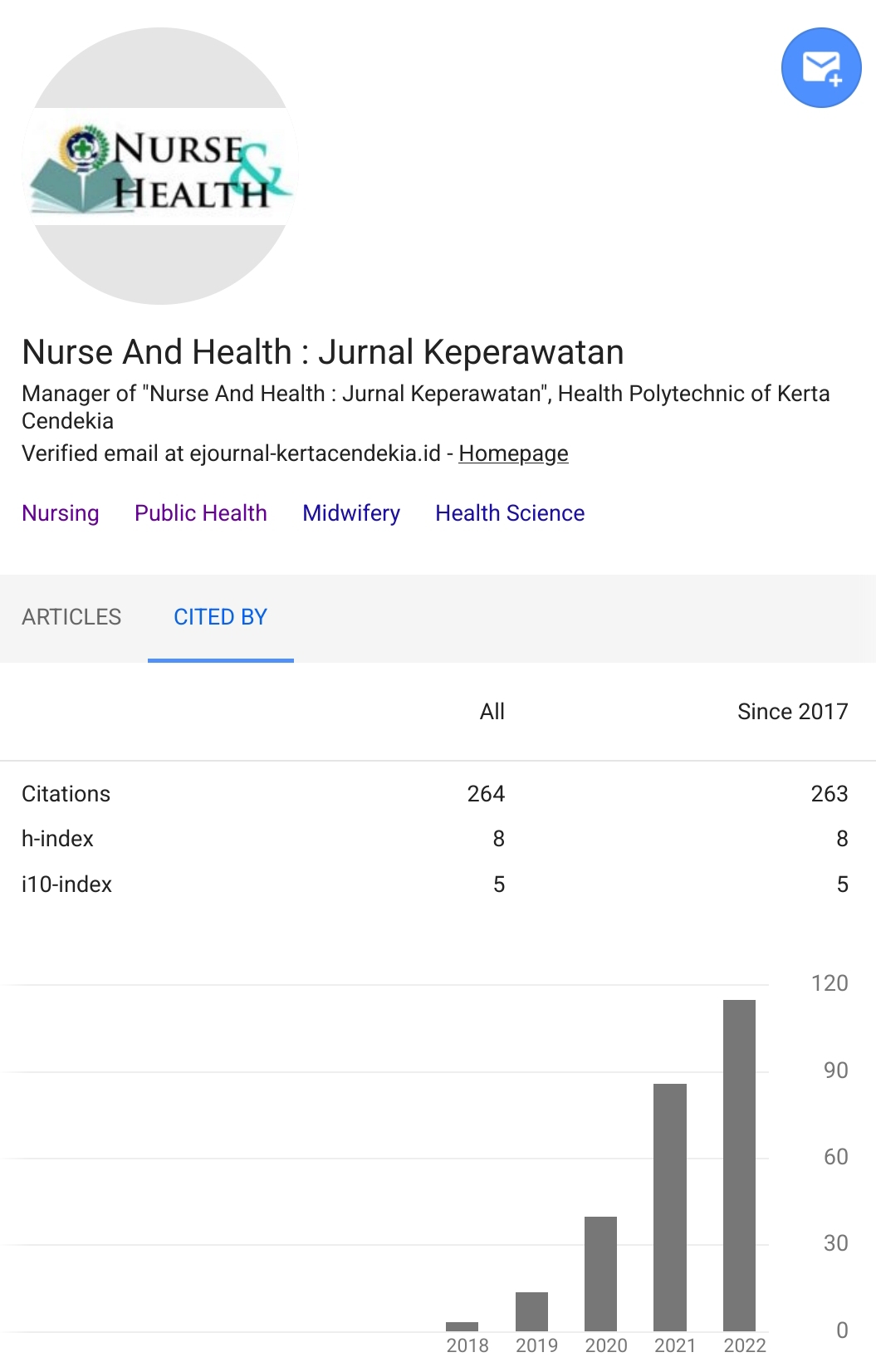SITUATION AND COMPETENCY OF FIRST RESPONDER IN PREPAREDNESS ON FACING EMERGENCY TO IMPROVE PUBLIC SAFETY IN THE UNIVERSITY
Abstract
Background: Cardiovascular disease and trauma caused by accidents remain the leading cause of death. Data by WHO reveals that 17,9 million people die from cardiovascular disease before reaching hospital. The problem is caused by the first aid mistake; hence, a prompt and effective response action of the first responder is important to handle out-of-hospital emergency care. The need for care and human resources is the biggest and most important component to act as the first responders.Objectives: The research aims to discover evaluation emergency situation in university and the competency level of the first responder taking first aid training in affect the way patients are managed during an emergency.Methods: The method employed is mixed methods consists of FGD with a four-stage contingency planning approach and quasi-experimental design of one group post-test that was conducted to obtain quantitative data. There were 30 participants in this research. Thematic and descriptive analysis tests were used to analyze the dataResults: The results show that there are four important things in developing an emergency system in the university area which are a distribution of operational area, communication system, Developing emergency system, and sustainable improvement of first responder capacity. The results of the competency assessment show that the average knowledge level of the participants is 79.5, and their psychomotor level is above 80%.Conclusion: First aid training is important to given for first responder to improve safety in the university. Keywords: Public Safety Center, First Responder, Emergency.Downloads
References
Advanced Trauma Life Support. (2018). Advanced Trauma Life Support Student Course Manual Tenth edition. American College of Surgeons. Chicago, USA. ISBN 78-0-9968262-3-5
Ajzen, I (1991). The Theory of Planned Behavior. Organizational Behavior and Human Decision Processes, 50, 179–211
American Heart Association. (2015). Highlights of the 2015 American Heart Association guidelines update for CPR and ECC. Dallas, USA: American Heart Association
Arimastuti, A. (2011). Tahapan proses komunikasi fasilitator dalam sosialisasi penguragan resiko bencana, Jurnal penanggulangan bencana, vol 2, No 2, hlm 15-23.
Creswell, J.W. 2014. Research Design: Pendekatan Kualitatif, Kuantitatif dan Mixed. Terjemahan Fawaid, A. Yogyakarta: Pustaka Pelajar.
Fikriana, R., & Afik, A. (2018). The effect of public safety center simulation toward increased self efficacy in integrated emergency service system coordination. Jurnal Keperawatan,9(1), 35-42.
Gill, R., Superko, H. R., McCarthy, M. M., Jack, K., Jones, B., Ghosh, D., Richards, S., Gleason, J. A., Williams, P. T., & Dansinger, M. (2019). Cardiovascular Risk Factor Reduction in First Responders Resulting from an Individualized Lifestyle and Blood Test Program: A Randomized Controlled Trial. Journal of Occupational and Environmental Medicine, 61(3), 183–189. https://doi.org/10.1097/JOM.0000000000001490
Jamil, M. (2016). LITERATURE REVIEW STRATEGI MENJAGA HIGH QUALITY CPR (HQCPR) PADA SETTING PRE, INTRA, DAN POST ATTEMPTS. Jurnal Kesehatan Hesti Wira Sakti, 4(1), 12-18.
Kemenkes R.I. (2013). Riset Kesehatan Dasar; RISKESDAS. Jakarta: Balitbang Kemenkes RI
Meaney, P. A., Bobrow, B. J., Mancini, M. E., Christenson, J., De Caen, A. R., Bhanji, F., ... & Aufderheide, T. P. (2013). Cardiopulmonary resuscitation quality: improving cardiac resuscitation outcomes both inside and outside the hospital: a consensus statement from the American Heart Association.Circulation, 128(4), 417-435.
McGuire, N. M. (2015). Environmental Education and Behavioral Change: An Identity-Based Environmental Education Model. International Journal of Environmental and Science Education, 10(5), 695-715.
Mohaupt, J. A. (2016). First-Responders and Emergency Department Healthcare Provider Interactions During Emergency Situations : A Grounded Theory Study. April.
O'Keeffe, C., Nicholl, J., Turner, J., & Goodacre, S. (2011). Role of ambulance response times in the survival of patients with out-of-hospital cardiac arrest. Emergency medicine journal, 28(8), 703-706.
Olchin, L., & Krutz, A. (2012). Nurses as first responders in a mass casualty: are you prepared? Journal of Trauma Nursing : The Official Journal of the Society of Trauma Nurses, 19(2), 122–129. https://doi.org/10.1097/JTN.0b013e3182562984
Paton, D. (2007). Preparing for natural hazards: the role of community trust. Disaster Prevention and Management: An International Journal.
Jati, W. R. (2013). Analisis Penanggulangan Bencana Berbasis Perspektif Cultural Theory. Jurnal Penanggulangan Bencana, 4(1), 35-44.
Van Dawen, J., Vogt, L., Schröder, H., Rossaint, R., Henze, L., Beckers, S. K., & Sopka, S. (2018). The role of a checklist for assessing the quality of basic life support performance: an observational cohort study. Scandinavian journal of trauma, resuscitation and emergency medicine, 26(1), 96.
Vidiarina, H. D. (2010). Perencanaan Kontinjensi Tinjauan tentang beberapa Pedoman Perencanaan dan Rencana Kontinjensi. Jakarta: GTZ-International Services.
Wiratma, B. (2018). IMPLEMENTASI PENANGANAN KEGAWATDARURATAN TERPADU (Studi Tentang Responsivitas Program Public Safety Center di Kabupaten Tulungagung) (Doctoral dissertation, Universitas Airlangga).
World Health Organization (WHO). (2019). The top 10 causes of death. 24 May 2018.
World Health Organization. (2017). Cardiovascular diseases (CVDs). Fact sheet No. 317, mei 2017. Retrieved from http://www.who.int/cardiovascular_diseases/ en/ on October 11, 2019.
Authors who publish with Nurse and Health: Jurnal Keperawatan agree to the following terms:
- Authors retain copyright licensed under a Creative Commons Attribution-NonCommercial 4.0 (CC BY-NC 4.0), which allows others to remix, tweak, and build upon the authors' work non-commercially, and although the others' new works must also acknowledge the authors and be non-commercial, they don't have to license their derivative works on the same terms.
- Authors are permitted and encouraged to post their work online (e.g., in institutional repositories or on their website) prior to and during the submission process, as it can lead to productive exchanges, as well as earlier and greater citation of published work (See The Effect of Open Access). Authors can archive pre-print and post-print or publisher's version/PDF.























